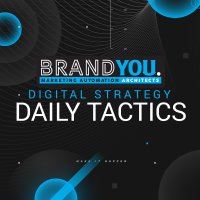Leads come and go with such frequency that businesses can lose track of what they’re doing with them. This is a critical aspect of making sure that each lead is welcomed as an opportunity for sales and not lost to other opportunities.
Lost leads equal lost money, but lifecycle marketing helps elevate those losses, recovers those leads that slip through the cracks, and lower costs all at the same time. Every time you lose a lead, you’re losing not just a potential sale, but valuable information about that prospect.
From startup to multinational corporation, businesses typically measure their success in terms of how many leads they receive and how many sales they make.
Lead generation is a continuous process, and today’s companies are focused on lead lifecycle management to make the most out of their marketing efforts and turn sales prospects into paying customers.
The first step in creating Lifecycle Marketing for your organization is creating life cycles for your customers.
What is Lifecycle Marketing?
Lifecycle Marketing refers to the process of prospects becoming aware of a product, making a purchase from a brand, and ideally becoming a company's longtime customer.
The process is made up of seven stages:
Subscriber
Lead
Marketing Qualified Lead (MQL)
Sales Qualified Lead (SQL)
Opportunity
Customer
Evangelist
An effective customer Lifecycle Marketing strategy helps businesses understand customers’ behaviors as well as their needs at every stage of their lifecycle.
A customer’s lifecycle has a clear beginning and end—meaning it isn’t one long process but one that moves from awareness to purchase and then retention.

How Lifecycle Marketing compares to the Sales Process
Lifecycle Marketing is an approach to a Digital Strategy that helps you understand where a customer is in the buying process and what they need at every single stage.
It’s not about the traditional sales process anymore. It’s about helping your customers understand all the details of what you do, what you offer, and how you fit into their lives.
The modern buyer can interact with your brand on a number of different touch points – social media sites, blogs, email newsletters and so on.
They can move through the Marketing Lifecycle at their own pace, which isn't always in sync with the rigid stages of the sales cycle.
That's why your Digital Strategy is so important in today's market – you have to appeal to your prospects where they are rather than where you want them to be.
The Lifecycle Marketing model recognizes that buyers are people first, with needs and desires. It's based on a much more human understanding of how people make decisions today — how they move through touch points of interest and consideration, making choices along the way.
This model puts customers at the center of the process, which is where they belong.
Lifecycle Marketing Stages
Lifecycle Marketing is a visual representation of the journey a consumer goes through when they become aware of, evaluate, purchase and use a product or service. It's also known as the buyer's journey, buyer's cycle or a funnel.
Lifecycle stages can be used in customer relationship management software (CRM), Marketing Automation, and lead tracking system platforms.
There are seven main stages that a lead or a customer can go through and we'll walk through these stages one-by-one.
Subscriber
Subscribers are people who have given permission, or opted-in, for you to contact them whenever you like. This could be your blog readers, your newsletter subscribers, or even a list of people who have purchased your products and services.
The acquisition of subscribers is a key part of increasing the size of your customer base.
By having regular contact with these individuals, you can build up trust and familiarity with your brand.
Their opt-in makes it far more likely for them to become paying customers for your product or service.
The key is that you need to be able to convert subscribers into buyers at some point down the line.
Lead
A lead is a prospect who has expressed interest in your company's products or services. A lead can be generated from many sources of your Digital Strategy, including a phone call, website, email campaign or other interaction with your brand.
Leads are potential customers that are actively seeking additional information about your business. They're "warm" prospects because they've demonstrated an interest in what you're offering.
Leads should be nurtured in order for them to convert into customers. Nurturing leads is a process of keeping your brand top of mind with them until they're ready to buy.
It's important to keep leads engaged because if you don't, they might forget about you or move on to another solution.
Be sure to have clear calls-to-action (CTAs) that drive the lead towards the next step in their journey.
Marketing Qualified Lead
A marketing qualified lead (MQL) is a lead that the marketing team has deemed more likely to become a customer compared to others.
This determination is based on criteria such as which: web pages were visited, content offers were downloaded, CTAs were clicked, and social posts were interacted with.
The “qualified lead” definition is the point at which marketing determines that a lead is ready to be handed to sales.
Since a company’s goal is to increase overall revenue, it needs to know how to prioritize the stage of the Marketing Lifecycle so that it spends the most time with the potential customers that will convert into the most revenue.
Sales Qualified Lead
Sales qualified leads (SQL) are hot. They are the best leads, the hottest leads. SQLs are unique from other leads because they're more ready than others to buy.
When you're starting off, sales qualified leads are the single biggest productivity booster you can have.
You don't want to chase people who aren't ready to buy; it wastes your time, and it can be annoying.
Your marketing team has done the initial research and vetting for these SQLs, so when you get them from your Marketing Automation tool, they are pre-qualified and pre-screened for you.
To sum up - SQLs are contacts that your organization has qualified as potential customers.
Opportunity
An opportunity is a contact that represents a sales opportunity to sell your organization's product or services.
Sales opportunities are generated through various sources including marketing campaigns and discussions with current customers.
When your Digital Strategy results in qualified leads, they should be sent to sales representatives for follow up. This is where it helps to have testimonials or case studies that will indicate why your product is better than others.
Your SQL has all the information they need to commit to buying from you, you have established trust and now it's time to close.
Customer
A customer is someone who has clicked your call-to-action, CTA. They have seen your product and have actually bought from you and the deal is closed.
In order to get them to this stage you need a clear, concise and compelling offer that tells why they should buy your product or service and gives them the option to do so.
Keep in mind that establishing trust with your contacts is vital so that users can complete the transaction with confidence.
Your customer is the most important person in your organization. They are the one that you are building your business around and creating value for.
Evangelist
Evangelists are the ones who believe in a brand, may it be a product or service. They spread the good word through their own experience and they share that with their friends, family and other people around them.
Evangelists can be found at any point in Lifecycle Marketing, but specific actions need to be taken to convert them into loyal customers. Your organization needs to be intentional and creative to create offers that continue to incentivize these customers to be loyal to your organization.
Evangelists have the power to make or break your brand as they can make their experience known to everyone. Evangelists are not only loyal customers, but also your best promoters.
Evangelists are some of the best assets you can have at your disposal. They'll promote your business, give you feedback and reviews on how to improve your product and become monthly repeat customers when treated with high regard.
Putting it in to action
The use of Lifecycle Marketing as a strategic marketing approach will ensure that you will always have a relevant Digital Strategy to make offers strategically to your customers every month.
This cohesive, systematic approach should give you the best chance at improving upon retention, engagement, and revenue with your potential customers.
Lifecycle Marketing identifies the micro-targeted stages by which the way modern buyers purchase online.
In a post-pandemic digital world, Lifecycle Marketing is not a trend that you can expect to peak and plateau soon. Rather, as companies learn more about their customers, the better they can predict ways to establish trust and value to keep buyers coming back each and every month.
The challenges in having monthly repeat customers have more to do with your Digital Strategy than their execution. If your company doesn’t already use Lifecycle Marketing strategies, it should start today.
If you need help…
Schedule a strategy session with Brand You to see how we can help you bring your Digital Strategy to life in your business.




